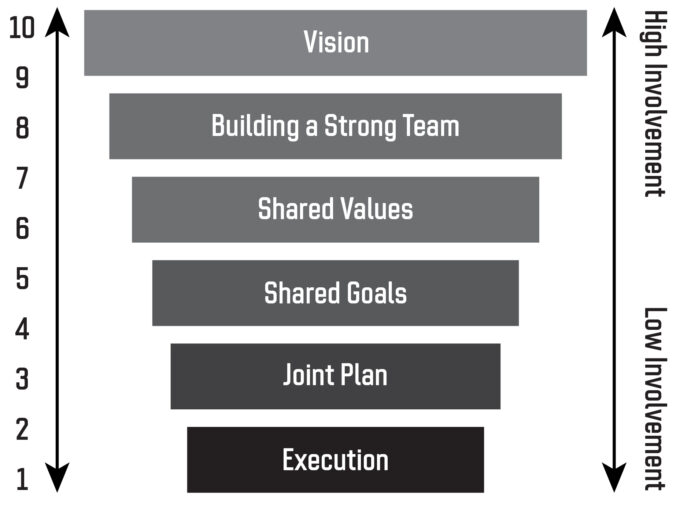Leadership is a delicate dance between being actively involved and delegating effectively. Finding the right level of involvement is critical, as both micromanagement and a hands-off approach have their pitfalls.
At one end of the spectrum lies the risk of micromanagement, exemplified by Laura, the CEO of a fast-growing tech startup. In the company’s early stages, which were characterized by a flat organizational structure, Laura’s direct involvement in all aspects of the business was instrumental to the company’s success. Yet, as the organization’s size exceeded 100 employees, the same level of involvement began to backfire.
Laura’s desire to maintain control and reluctance to delegate decision-making led to significant delays, as team members awaited her approval for even minor tasks. This bottleneck not only slowed down the company’s growth but also culminated in frustration and high rates of attrition.
At the other end of the spectrum, some leaders exhibit an overly hands-off approach, often described as “laissez-faire leadership”. Keith, the CEO of an innovation unit within a public company, exemplifies this style. In his determination to avoid micromanagement, Keith distanced himself too much from day-to-day operations. This absence of leadership made his team feel unsupported and directionless, which led to uncoordinated initiatives, waning motivation, and ultimately, increased employee turnover.
The examples of Laura and Keith illustrate that the art of effective leadership is about striking the right balance of leadership involvement and team autonomy. To aid executives like Laura and Keith in finding the right level of involvement in the right situation, I have designed a leadership framework composed of “The Leadership Scale” and “Corrective Considerations”.






 Audio available
Audio available
